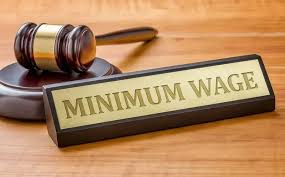Capital Gains Income
Capital gain is denoted as the net profit that an investor makes after selling a capital asset exceeding the price of purchase. The entire value earned from selling a capital asset is considered as taxable income. To be eligible for taxation during a financial year, the transfer of a capital asset should take place in the previous fiscal year. Financial gains against a sale of an asset are not applicable to inherited property. It is considered only in case of transfer of ownership. According to the Income Tax Act, assets received as gifts or by inheritance are exempted in the calculation of income for an individual. Buildings, lands, houses, vehicles, Mutual Funds, and jewelry are a few examples of capital assets. Also, the rights of management or legal rights over any company can be considered as capital assets. What Is a Capital Gain? A capital gain refers to the increase in the value of a capital asset that is realized when it is sold. In other words, a capital gain occurs when you sell an asset for more than what you paid to purchase it. The Internal Revenue Service (IRS) taxes individuals on capital gains under certain circumstances. Almost any type of asset you own is a capital asset. They can include investments such as stock, bonds, or real estate, and items purchased for personal use, such as furniture or a boat. The following are not included under capital assets Any stock, consumables or raw materials that are held for the purpose of business or profession. Goods such as clothes or furniture that are held for personal use. Land for agriculture in any part of rural India. Special bearer bonds that were issued in 1991. Gold bonuses issued by the Central Government such as the 6.5% gold bonus of 1977, 7% gold bonus of 1980 and defense gold bonus of 1980. Gold deposit bonds that were issued under the gold deposit scheme (1999) or the deposit certificates that were issued under the Gold Monetisation Scheme (2015). Types of Capital Gain Short Term Capital Gain If an asset is sold within 36 months of acquisition, then the profits earned from it is known as short term capital gains. For instance, if a property is sold within 27 months of purchase, it will come under short term capital gains. However, tenure varies in the case of different assets. For Mutual Funds and listed shares, Long term capital gain happens if an asset is sold after holding back for 1 year. Long Term Capital Gain The profit earned by selling an asset that is in holding for more than 36 months is known as long-term capital gains. After 31st March 2017, a holding period for non-moveable properties was changed to 24 months. However, it is not applicable in case of movable assets such as jewelry, debt-oriented Mutual Funds, etc. Furthermore, a few assets are considered as short-term capital assets if the holding period is less than 12 months. Here is a list of assets that are considered according to the rule mentioned above – Equity shares of any organization listed on a recognized Indian stock exchange. Securities like bonds, debentures, etc. that are listed on any Indian stock exchange. UTI units, regardless of being quoted or unquoted. Capital gain on Mutual Funds that are equity-oriented, whether they are quoted or not. Zero-coupon bonds. All the assets mentioned above are considered as long-term capital assets if they are held for 12 months or more. In case of any asset acquired by inheritance or gift, then the period for which an asset is owned by a previous owner is considered. Calculation of Capital Gains Full Value Consideration – It is the consideration that is received by a seller in return for a capital asset. Cost of Acquisition – The cost of acquisition is the value of an asset when a seller acquires it. Cost of Improvement – The cost of improvement is the amount of expenses incurred by a seller in making any additions or alterations to a capital asset. To calculate the value of short term capital gain, the full amount of consideration is required to be determined at first. From the obtained value, cost of acquisition, cost of improvement and the total expenditure incurred concerning the transfer of ownership has to be deducted. This resultant value will be the capital gain on investments. Indexed Cost of Acquisition The cost of acquisition is calculated on the present terms by applying the CII (Cost Inflation Index). It is done to adjust the values by taking into account the inflation that takes place over the years while holding the asset. The indexed cost of acquisition can be estimated as the ratio of the Cost Inflation Index (CII) of the year when an asset was sold by a seller and that of the year when the property was acquired or the financial year 2001-2002, whichever is later multiplied by the Cost of acquisition. Suppose, a person acquired an asset at Rs. 50 Lakh in the financial year 2004-2005 and she decided to transfer the property in the fiscal year 2018-19. The CII of the financial year 2004-05 and 2018-19 were 113 and 280 respectively. Therefore, the indexed cost of acquisition will be 50 X 280 / 113 = Rs. 123.89 Lakh. Indexed Cost of Improvement The indexed cost of the improvement is calculated by multiplying the associated cost of improvement that was required to the CII of the year divided by the CII of the year in which the improvement took place. Tax Exemptions on Capital Gains 1. Section 54 If an amount earned by selling a residential property is invested to purchase another property, then the capital gains earned by transferring the ownership of a property is tax exempted. However, deductions can be claimed only if the following conditions are met – Individuals are required to purchase a second property within 2 years of sale or 1 year before transferring the ownership. In the case of an under-construction property, the purchase of a second property should be
Capital Gains Income Read More »


